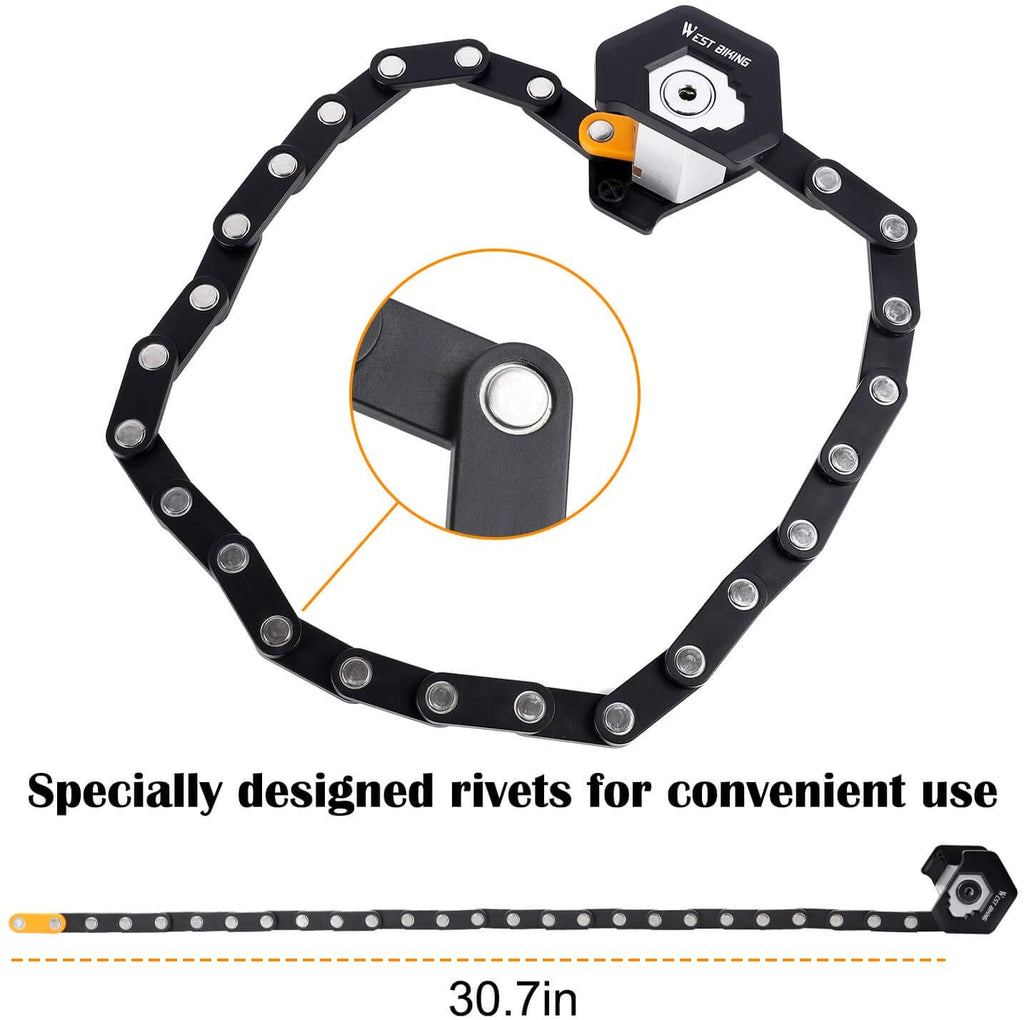State-by-State Electricity Carbon Rankings: Understanding CO₂ Emissions and Renewable Energy Trends
There may be an unstated environmental cost associated with the electricity used to charge your phone or flip a light switch. Carbon intensity, or the quantity of carbon dioxide (CO₂) released per megawatt-hour (MWh) of electricity produced, is a measure of that expense. The U.S. Environmental Protection Agency (EPA) and Energy Information Administration (EIA) monitor this metric, which is crucial for determining how clean or dirty a state's electricity actually is.
States that primarily use coal-fired power generate significantly more CO₂ per MWh than states that use zero-emissions sources like nuclear and hydropower or renewables like solar or wind. In the United States, emissions vary greatly; some states emit less than 20 lbs of CO₂ per MWh, while others emit close to 2,000 lbs. In addition to hastening climate change, high carbon intensity deteriorates air quality, which increases the risk of respiratory illnesses and raises medical expenses.
In this post, we'll dissect the state-by-state rankings of carbon intensity, examine the factors that influence those figures, and outline what you can do to help your state move toward a cleaner, healthier energy future.
1. What is Carbon Intensity and Why It Matters
Defining Carbon Intensity and Its Role in Energy Policy
The quantity of CO₂ emissions produced per unit of electricity generated is called carbon intensity, or emission intensity. It is commonly measured in grams per kilowatt-hour (g/kWh) or pounds or kilograms per megawatt-hour (lbs/MWh or kg/MWh).
Carbon intensity is significantly impacted by the fuel type used to generate electricity:
- Typically, 2,200–2,300 lbs CO₂ per MWh (about 1,000 kg/MWh) are released by coal-fired plants, as per the NW Clean Energy Atlas report.
- The combined-cycle emissions of natural gas are roughly 950–1,100 lbs CO₂/MWh (430–490 g CO₂/kWh), as per the U.S. Energy Information.
- Nuclear and renewable energy sources (wind, solar, and hydro) emit virtually no CO₂ during operation, frequently less than 50 g CO₂/kWh over the course of a product's lifecycle. Moreover to check carbon emission, you can calculate it through a carbon Carbon footprint calculator.

Why carbon intensity matters:
- It serves as the foundation for important laws that seek to gradually reduce grid emissions, such as carbon pricing, Renewable Portfolio Standards, and clean energy requirements.
- While assisting utilities and regulators in establishing performance standards, it encourages the retirement of coal plants with high emissions in favor of cleaner alternatives.
2. How States Rank on Carbon Intensity

State-by-State Carbon Intensity Rankings and Comparisons
Rankings of carbon intensity in the US differ significantly, mostly due to the predominant energy source that each state uses. CO₂ emissions per megawatt-hour (MWh) are significantly higher in states with coal-heavy energy portfolios than in those with nuclear or renewable energy.
Lowest-Emission States (Cleanest Grids)
- Due to its almost complete reliance on hydropower and imported clean electricity, Vermont has the lowest carbon intensity in the country (8.4 lbs CO₂/MWh). It doesn't use fossil fuels to produce electricity within the state.
- Following closely behind, Washington's extensive hydropower network emits 200–300 lbs CO₂/MWh.
- Powered by a combination of wind and hydropower, Idaho and Oregon normally emit less than 400 lbs CO₂/MWh.
Highest-Emission States (Dirtiest Grids)
At the opposite end:
- With 1,970.8 lbs CO₂/MWh, Wyoming has the lowest ranking, with 79% of its generation coming from coal.
- West Virginia generates about 88% of its 1,850 lbs CO₂/MWh emissions from coal.
- Other top emitters include:
- Emissions from Kentucky range from 1,550 to 1,600 lbs CO₂/MWh.
- Missouri: emitting almost 1,450–1,500 lbs CO₂/MWh.
- North Dakota: emitting between 1,300 and 1,400 pounds of CO₂ per megawatt-hour.
Carbon Intensity: Per Capita CO₂ Emissions by State
| State | CO₂ (tons/person) | Dominant Energy Source | State | CO₂ (tons/person) | Dominant Energy Source |
|---|---|---|---|---|---|
| Wyoming | 96.6 | Coal (~79%) | Minnesota | 14.5 | Coal + Wind |
| North Dakota | 73.2 | Coal | Colorado | 14.3 | Coal + Gas |
| Alaska | 56.3 | Diesel + Hydro | New Mexico | 13.8 | Coal + Gas |
| West Virginia | 44.6 | Coal (~88%) | Michigan | 13.2 | Coal + Gas |
| Louisiana | 41.8 | Gas + Nuclear | Arizona | 12.7 | Gas + Nuclear |
| Montana | 26.3 | Coal + Hydro | Illinois | 12.4 | Nuclear + Gas |
| Nebraska | 24.4 | Coal + Wind | Pennsylvania | 12.1 | Coal + Nuclear |
| Kentucky | 24.3 | Coal | Florida | 11.9 | Natural Gas |
| Indiana | 23.9 | Coal | Idaho | 11.4 | Hydropower |
| Iowa | 22.3 | Wind | Ohio | 11.3 | Coal + Gas |
| Mississippi | 21.4 | Gas | Washington | 9.6 | Hydropower |
| Texas | 20.8 | Natural Gas + Wind | New Hampshire | 9.9 | Nuclear + Hydro |
| Alabama | 20.3 | Gas + Hydro | Rhode Island | 9.3 | Natural Gas |
| Oklahoma | 20.1 | Wind + Gas | Oregon | 8.9 | Hydropower |
| Kansas | 19.6 | Wind + Coal | Massachusetts | 8.5 | Natural Gas |
| South Dakota | 18.5 | Hydro + Wind | Vermont | 8.5 | Hydro + Clean Imports |
| Missouri | 18.4 | Coal | New York | 8.4 | Hydro + Nuclear |
| Utah | 18.2 | Coal | California | 8.4 | Natural Gas + Renewables |
| Arkansas | 17.8 | Gas + Nuclear | New Jersey | 10.0 | Nuclear + Gas |
| South Carolina | 17.4 | Nuclear | Connecticut | 10.2 | Nuclear |
| Tennessee | 16.8 | Nuclear + Hydro | Maine | 10.1 | Hydro, Biomass |
| Georgia | 16.6 | Nuclear + Gas | Hawaii | 10.3 | Petroleum |
| North Carolina | 16.1 | Nuclear + Gas | Delaware | 10.4 | Natural Gas |
| Wisconsin | 15.4 | Coal + Nuclear | Maryland | 8.2 | Nuclear + Gas |
| Nevada | 14.7 | Natural Gas + Solar | District of Columbia | 5.8 | Grid Imports |
3. Renewable vs. Coal: Analyzing State Energy Mixes
The Impact of Renewable Energy Share vs Coal on Carbon Intensity
Examining the mix of fuels used in each state's electricity generation is crucial to comprehending variations in carbon intensity at the state level.
National patterns indicate:
- With the rise of wind and solar power, coal's share of U.S. electricity generation dropped from over 24% in 2021 to just about 12–16% in early 2024 (Reuters).
- In 2022, renewable electricity generation overtook coal generation for the first time, and it is still increasing (EIA).

- Higher renewable penetration is associated with significantly lower carbon intensity, according to empirical research, particularly when hydropower is used (global study).
High-Renewable, Low-Carbon States
- South Dakota
- Renewable share: >80% (wind, hydro, biomass)
- Coal share: very low (<10%)
- Carbon intensity: approximately 350 lbs CO₂/MWh
- Vermont
- Renewables: nearly 100% (hydro and imports)
- Coal: 0%
- Carbon intensity: ≈ 8–15 lbs/MWh
- Idaho
- Renewables: around 70–75%, mostly hydro and wind
- Coal: negligible
- Carbon intensity: ~250–300 lbs/MWh
High-Coal, High-Carbon States
- Wyoming
- Share of coal: 79%
- Renewables: about 15%
- Carbon intensity: approximately 1,970 lbs/MWh
- West Virginia
- Share of coal: 88%
- Renewables: <5%
- Carbon intensity: ~1,850 lbs/MWh
- Missouri
- share of coal: ~65–70%
- Renewables: ~10–12%
- Carbon intensity: ~1,400–1,500 lbs/MWh
Natural Gas: The Partial Middle Ground
Moderate carbon intensity can be attained by states that rely more on natural gas but lack significant renewable shares:
- Nevada: about 30% renewables; the remaining gas has a carbon intensity of about 720 lbs/MWh.
4. State Carbon Intensity Changes Over Time
The Evolution of Carbon Intensity in Important States
Many states drastically decreased the carbon intensity of their electricity between 2016 and 2024 by moving away from coal and increasing the use of natural gas and renewable energy sources.
National Trend
- Between 2016 and 2020, the carbon intensity of U.S. electricity decreased by about 18%, mostly as a result of coal retirements and increased use of renewable energy sources and natural gas (EIA "carbon intensity continues to fall")..
Notable State Success Stories
Tennessee
- Tennessee reduced its CO₂ per MWh by almost 486 lbs between 2016 and 2020, which was the biggest decrease of any U.S. state.
- The expansion of nuclear and solar power, the retirement of aging coal plants, and increased natural gas generation are the main drivers (Tennessee Energy Policy Council report, 2024).
Oklahoma
- Due mostly to wind expansion, Oklahoma's share of clean electricity generation rose from 32% to 42% between 2018 and 2023.
- From 384 g CO₂/kWh (≈845 lbs/MWh) in 2018 to 297 g CO₂/kWh (~655 lbs/MWh) in 2023, this change resulted in a 20% decrease in power-sector carbon intensity, greatly surpassing both Texas (~7%) and national reductions (~14%).
Maryland
- Through the implementation of Renewable Portfolio Standards, energy efficiency policies, and emissions caps, Maryland was able to reduce overall emissions by 36% and per capita emissions by 42% between 2005 and 2022.
Contrast with Large Emitters
- Texas continues to contribute the most CO₂ to the nation's electricity supply, accounting for roughly 13.4% of total emissions in 2022 (663 million metric tons).
- Though not as quickly as states like Ohio and Oklahoma, Texas has made some progress in reducing its carbon intensity over the past 10 years thanks to significant increases in wind and solar capacity (EIA data).
Why These Changes Matter
- Rapid decarbonization of electricity has been attained by states that have invested in renewable portfolio standards (RPS), retired coal-fired power plants, and implemented electronic grid planning.
- For instance, since the program's inception, states that took part in the Regional Greenhouse Gas Initiative (RGGI) have collectively cut emissions from the power sector by more than 50% without impairing economic growth.
5. Population‑Weighted Averages: How Carbon Intensity Affects the Public
Why Population Size Changes the Carbon Story
megawatt-hour (MWh) carbon intensity shows how polluting a state's electricity is, but it ignores a crucial factor: the number of people exposed. Population-weighted carbon intensity is important in this situation. It shows which states not only emit more but also have a greater impact on the population by taking into account both emissions per MWh and the number of residents who depend on that power.
Densely Populated States = More People at Risk
Texas
- population:About 30 million people live there.
- Carbon intensity:~860–890 lbs CO₂/MWh
- Texas contributes more than 13% of all U.S. power-sector emissions, though it is not the worst per MWh (663 million metric tons in 2022).
- Due to its size, millions of people are exposed to electricity that has a moderate carbon footprint every day.
Florida
- population: About 22 million people live there.
- carbon intensity:~830 lbs CO₂/MWh is the
- Fossil fuels still provide more than 77% of Florida's electricity.
- Due to the recent reversal of renewable commitments, Florida is now more dependent on gas and even coal, which increases the risk of exposure for a sizable population.
To put it simply, more exposure means more people. Massive cumulative emissions and public health burdens result from even modest carbon intensity in large states. Because of this, there are significant advantages to decarbonizing the grid in states with high populations, both for the climate and the air that millions of people breathe on a daily basis.
Contrast: Low Population, High Intensity
Wyoming
- Population: approximately 580,000
- Carbon intensity:The highest carbon intensity in the United States is approximately 1,970 pounds of CO₂/MWh.
- However, because of the small population, the local impact is negligible and the majority of this electricity is exported.
Population-Weighted Emission Exposure by State (2024)
| Rank | State | Population (2024) | Carbon Intensity | Emission Exposure |
|---|---|---|---|---|
| 1 | Texas | 31,290,831 persons | 880 lbs CO₂/MWh | 27,535,931,280 person-lbs CO₂/MWh |
| 2 | California | 39,431,263 persons | 570 lbs CO₂/MWh | 22,476,820,910 person-lbs CO₂/MWh |
| 3 | Florida | 23,372,215 persons | 830 lbs CO₂/MWh | 19,399,939,450 person-lbs CO₂/MWh |
| 4 | New York | 19,867,248 persons | 310 lbs CO₂/MWh | 6,159,847,680 person-lbs CO₂/MWh |
| 5 | Pennsylvania | 13,078,751 persons | 610 lbs CO₂/MWh | 7,978,038,110 person-lbs CO₂/MWh |
| 6 | Illinois | 12,710,158 persons | 630 lbs CO₂/MWh | 8,007,399,540 person-lbs CO₂/MWh |
| 7 | Ohio | 11,883,304 persons | 720 lbs CO₂/MWh | 8,555,978,880 person-lbs CO₂/MWh |
| 8 | Georgia | 11,180,878 persons | 760 lbs CO₂/MWh | 8,497,467,280 person-lbs CO₂/MWh |
| 9 | North Carolina | 11,046,024 persons | 600 lbs CO₂/MWh | 6,627,614,400 person-lbs CO₂/MWh |
| 10 | Michigan | 10,140,459 persons | 680 lbs CO₂/MWh | 6,889,512,120 person-lbs CO₂/MWh |
| 11 | New Jersey | 9,500,851 persons | 290 lbs CO₂/MWh | 2,755,246,790 person-lbs CO₂/MWh |
| 12 | Virginia | 8,811,195 persons | 620 lbs CO₂/MWh | 5,462,941,900 person-lbs CO₂/MWh |
| 13 | Washington | 7,958,180 persons | 230 lbs CO₂/MWh | 1,830,381,400 person-lbs CO₂/MWh |
| 14 | Arizona | 7,582,384 persons | 620 lbs CO₂/MWh | 4,701,078,080 person-lbs CO₂/MWh |
| 15 | Tennessee | 7,227,750 persons | 550 lbs CO₂/MWh | 3,975,262,500 person-lbs CO₂/MWh |
6. Surprising Findings in the Rankings and Controversial Aspects
The Renewable Share vs. Carbon Intensity Paradox: When Green Isn't Clean
Some U.S. states appear to be leaders in clean energy, with high percentages of electricity generated from renewable sources. A closer look, however, reveals an unexpected fact: a high renewable share is not always linked to low carbon intensity (CI).
Examples of the Renewable–Carbon Intensity Mismatch:
- California
- Renewables' share in 2022: roughly 49.2%
- Carbon intensity: The carbon intensity is still higher than average, at about 400 gCO₂/kWh.
- Why? More than 90 million MWh of electricity is imported from nearby fossil fuel-dependent states like Arizona, Nevada, and Utah. These imports, which are often driven by gas or coal, raise California's carbon footprint even though in-state generation is comparatively clean.
- Texas
- Renewable Energy: With a roughly 29% market share, this is the biggest wind generator in the US.
- Carbon intensity: The carbon intensity is approximately 560 gCO₂/kWh.
- Why? Because of the enormous demand and continued reliance on natural gas, overall emissions are still high. Even with the impressive wind and solar infrastructure, fossil fuel use still dominates.
- Florida
- Renewable Energy: Although solar energy has great potential, its share is only around 5%.
- Carbon intensity:About 800 gCO₂/kWh is the carbon intensity.
- Why? Strong utility control and a dearth of state incentives have contributed to the sluggish adoption of solar. Despite being referred to as the "Sunshine State," fossil fuels provide a significant amount of its energy..
Generation vs. Consumption: A Hidden Driver of Carbon Footprints
Another issue that is frequently overlooked is how electricity accounting works: which state—the one that generates or the one that consumes electricity—should be responsible for carbon emissions?
Market-Based vs Location-Based Accounting:
- Location-Based: Tracks emissions from electricity generated within a state.
- Market-Based: Accounts for emissions from electricity consumed, regardless of origin.
Why It Matters:
- California:
- Market-based CI is ~250 gCO₂/kWh lower than location-based CI.
- If you ignore the dirtier imports the state consumes, it looks "cleaner" on paper.
- Research indicates that this accounting discrepancy may result in 55% misrepresentation of actual emission impacts in Western power markets (arxiv.org/abs/2402.03550).
- Massachusetts & New York:
- Significant amounts of electricity are imported by both from grids that rely heavily on fossil fuels.
- Compared to what generation statistics alone indicate, their market-based CI is significantly higher.
Clean Grids Without the Hype: Unexpected Low CI Winners
While some states that rely heavily on renewable energy sources fall short, others quietly and unobtrusively reach ultra-low CI.
Examples of Quiet Success:
- Vermont
- Clean/Renewable Share: approximately 100%
- Carbon intensity:The lowest carbon intensity in the United States is about 9 gCO₂/kWh.
- heavily dependent on Quebec-sourced hydropower imports.
- Washington
- Clean Share: approximately 85% (primarily hydro)
- CI: ~40 gCO₂/kWh
- Strong in-state generation with minimal reliance on imports.
- South Dakota & Idaho
- Clean Shares: More than 75%
- CI: approximately 35 to 50 gCO₂/kWh
- minimal exports, low consumption, and high wind and hydro.
7. Conclusion and Call to Action
Why You Should Care About Your State’s Carbon Intensity
Carbon intensity is a measure of how clean or dirty your electricity is, not just a technical term. What matters most is the total mix of energy you use and its source, even if your state encourages renewable energy. Knowing this enables you to lessen your individual impact on the environment, support wiser policies, and make better decisions at home.
The more you know about your state’s energy profile, the more power you have to influence change, whether it’s through how you vote, how you power your home, or how you speak up in your community.
Ready to take the first step?
- Calculate your personal carbon footprint quickly and easily: Now check out our carbon footprint calculator.












